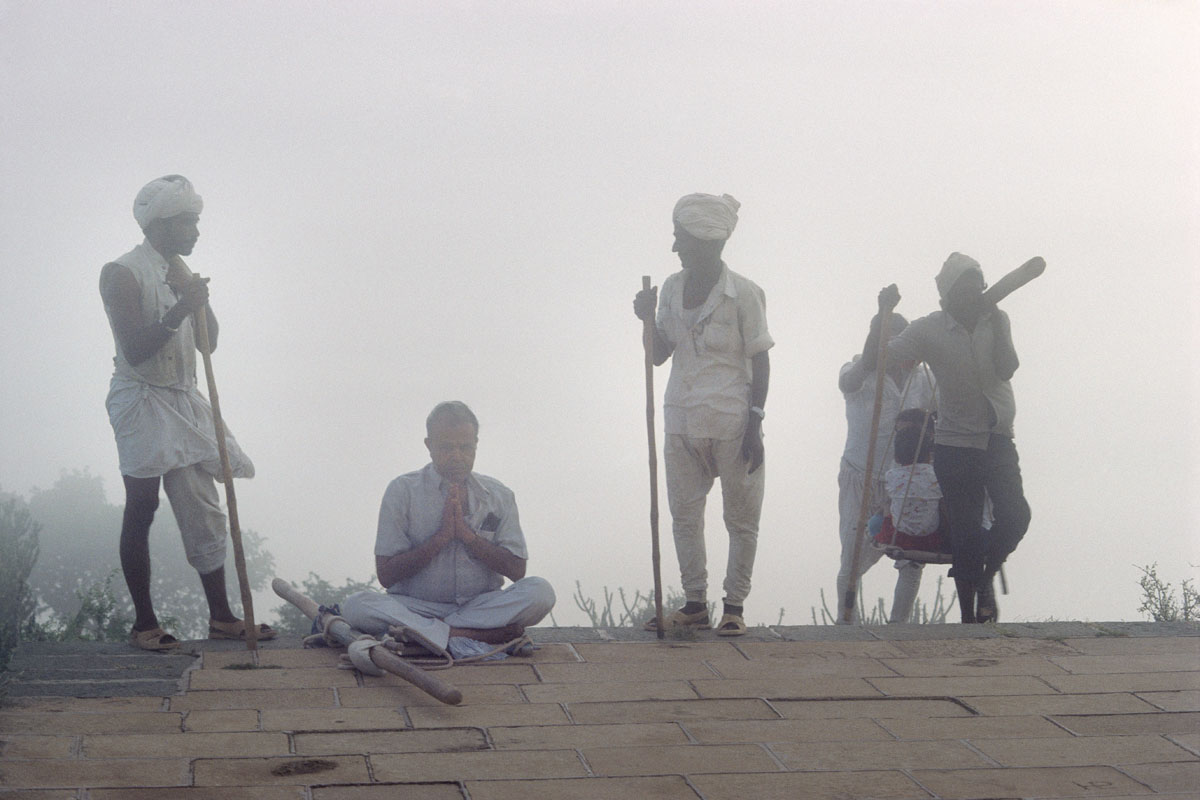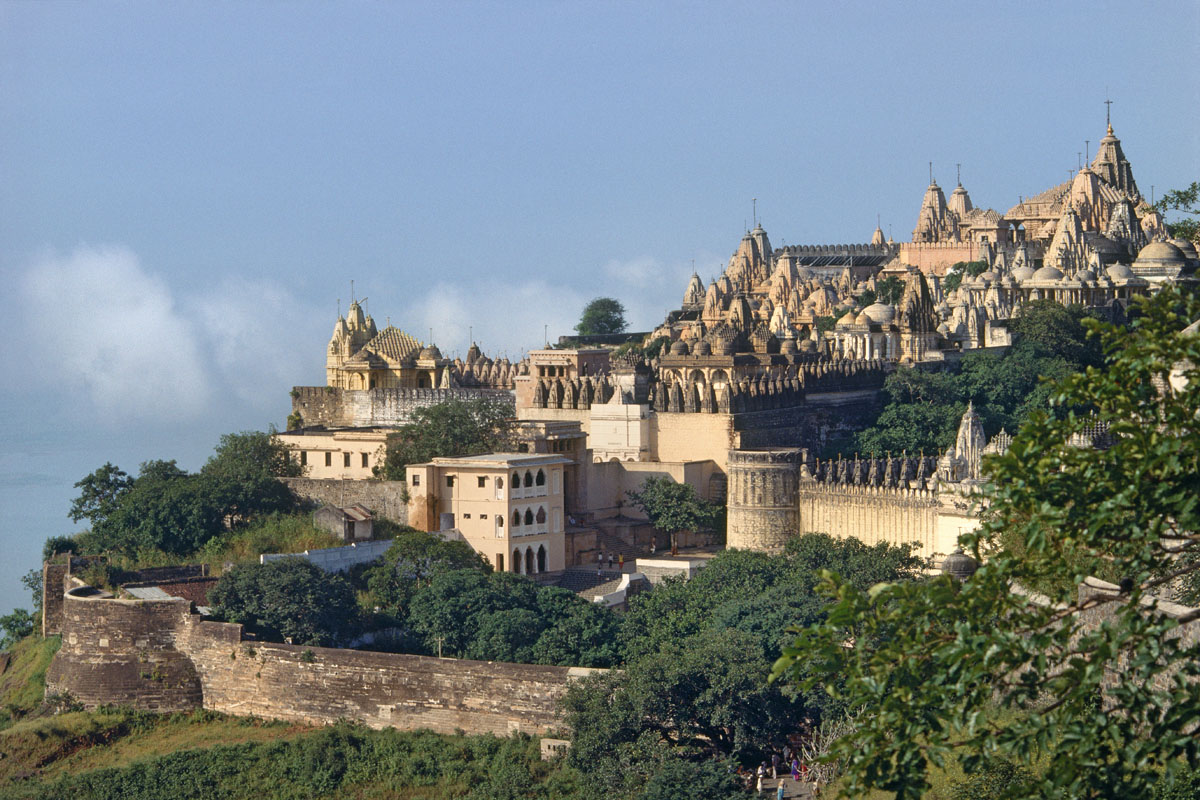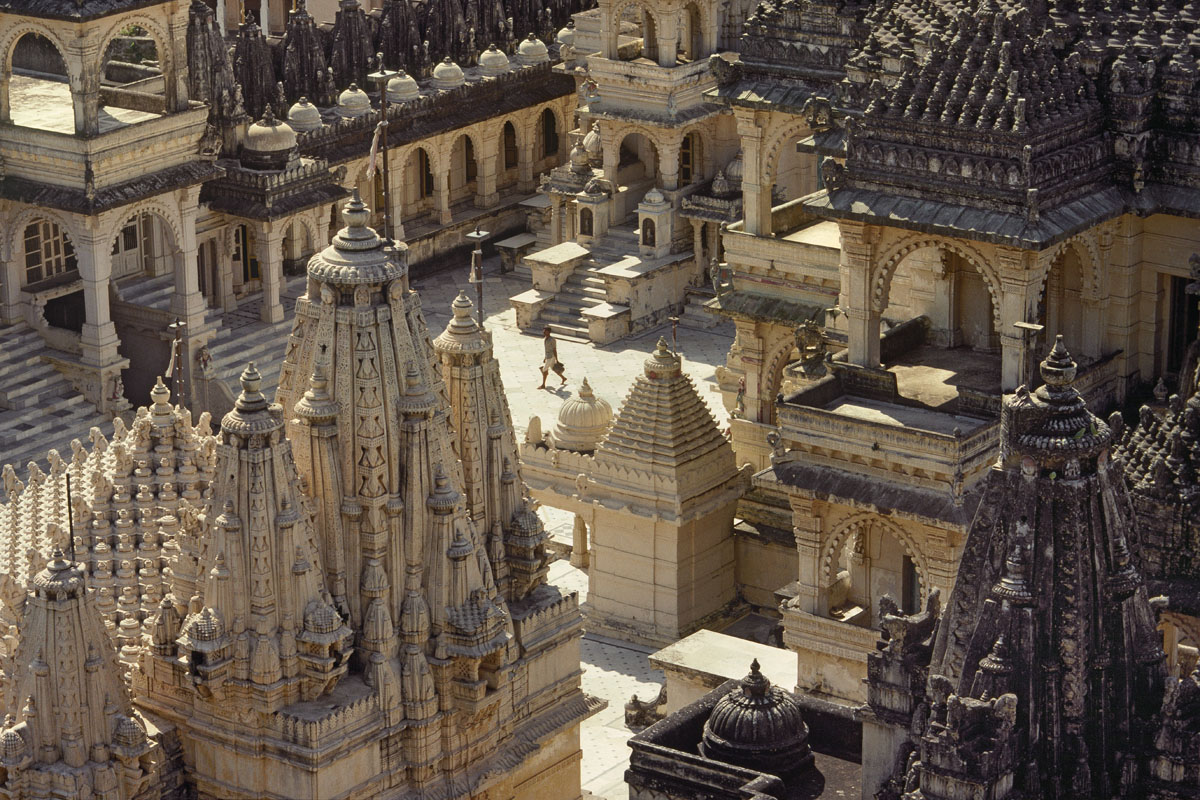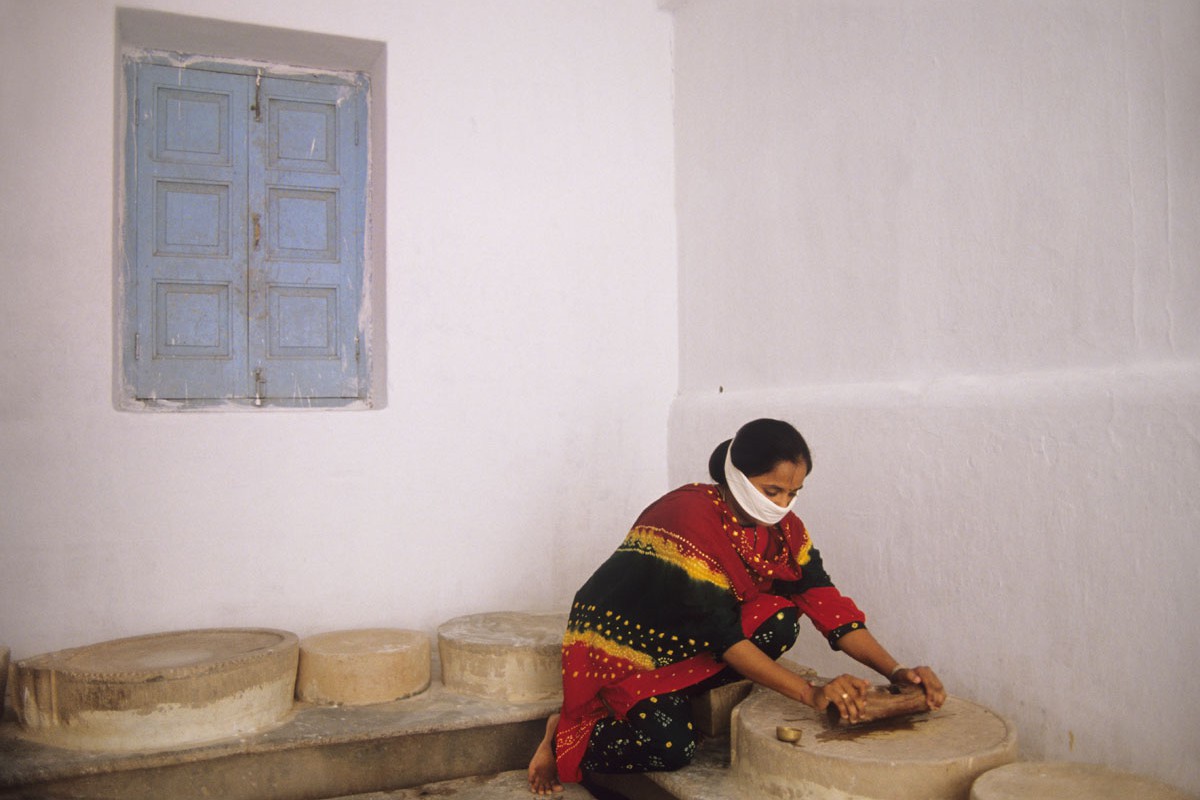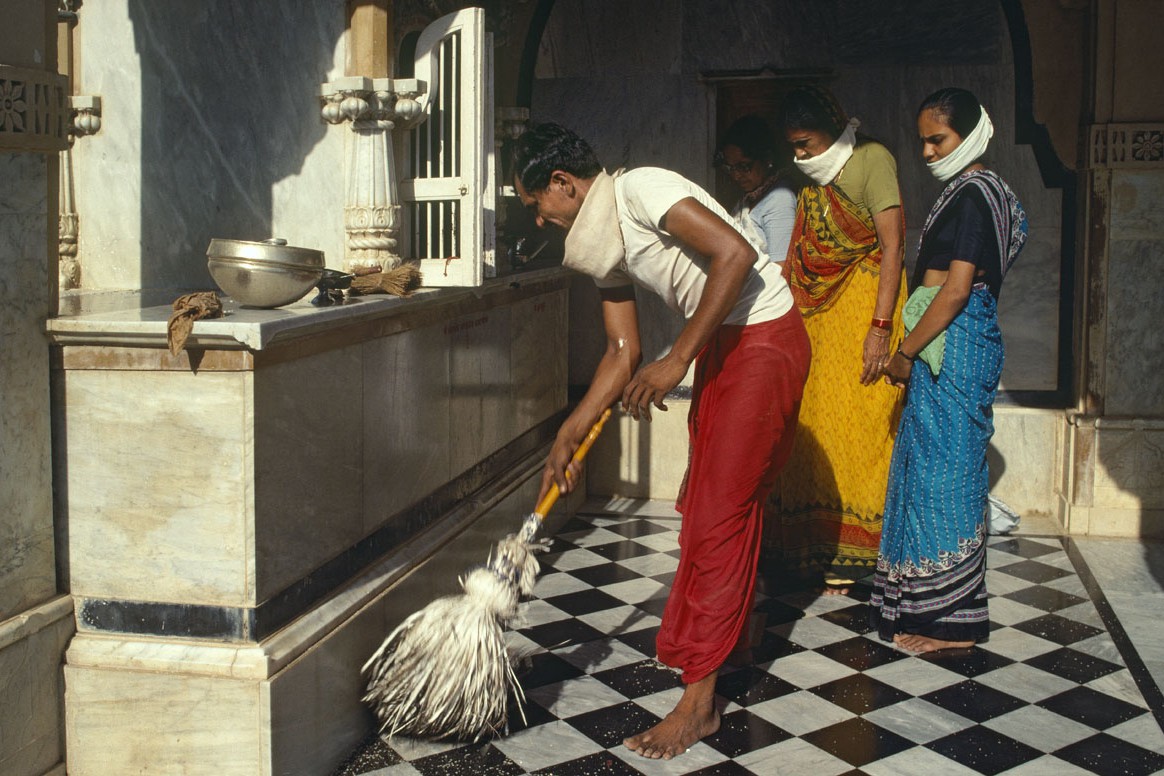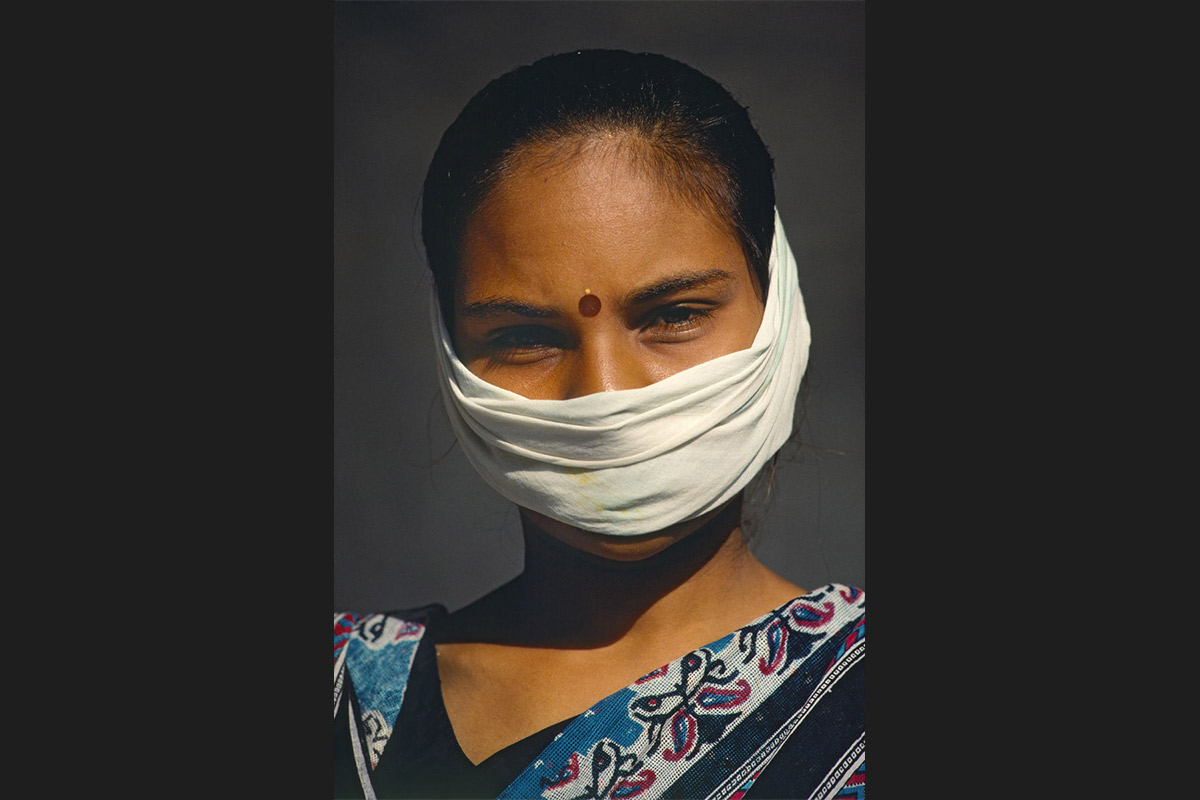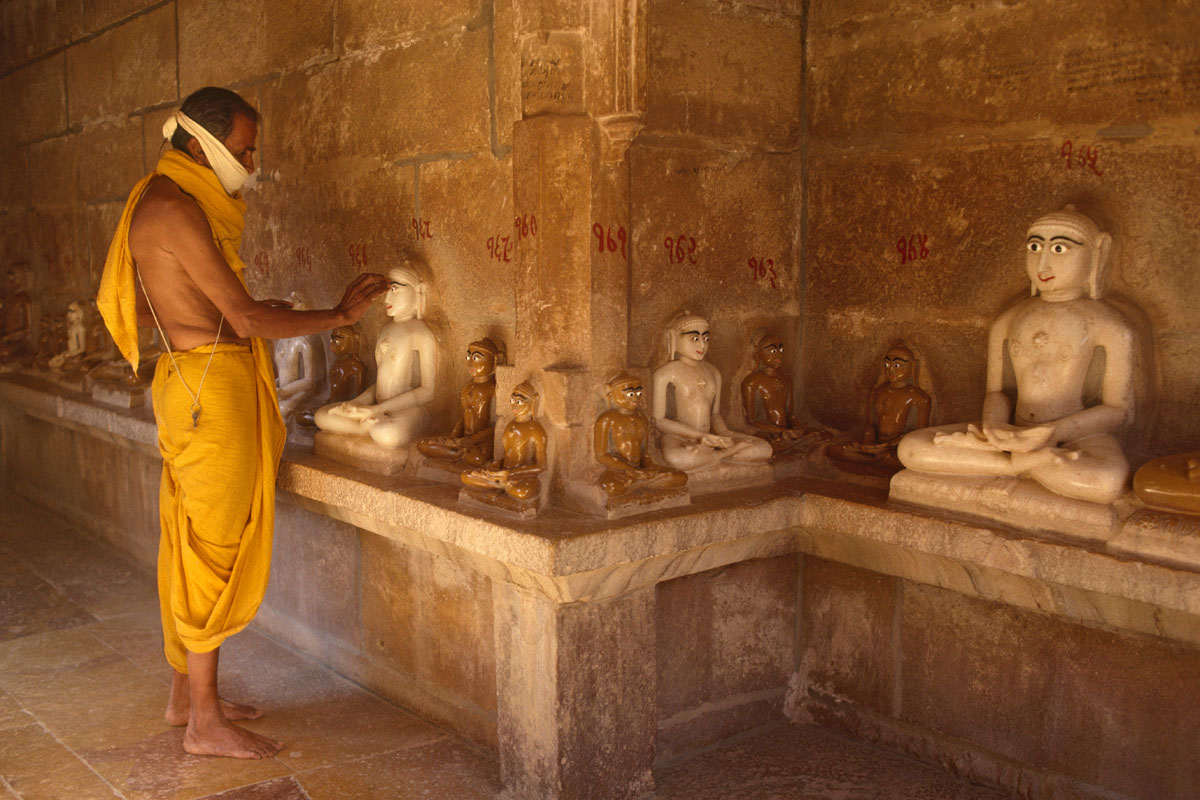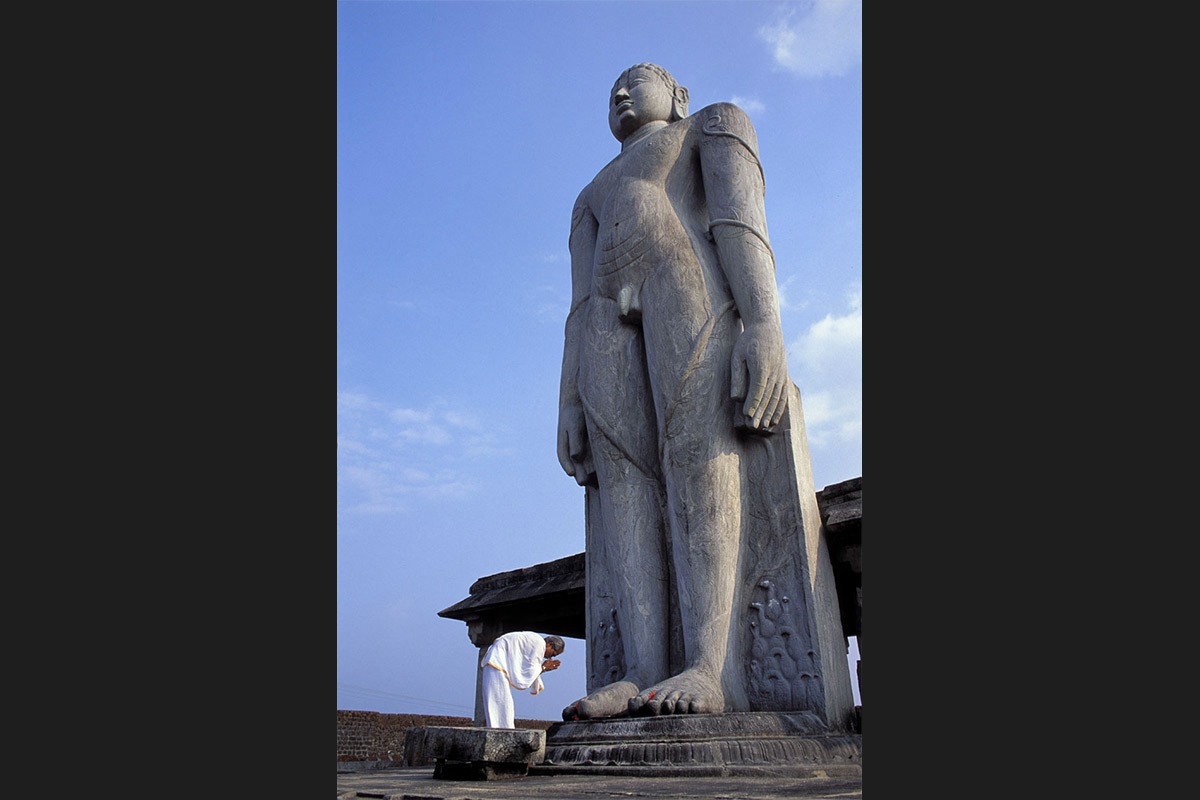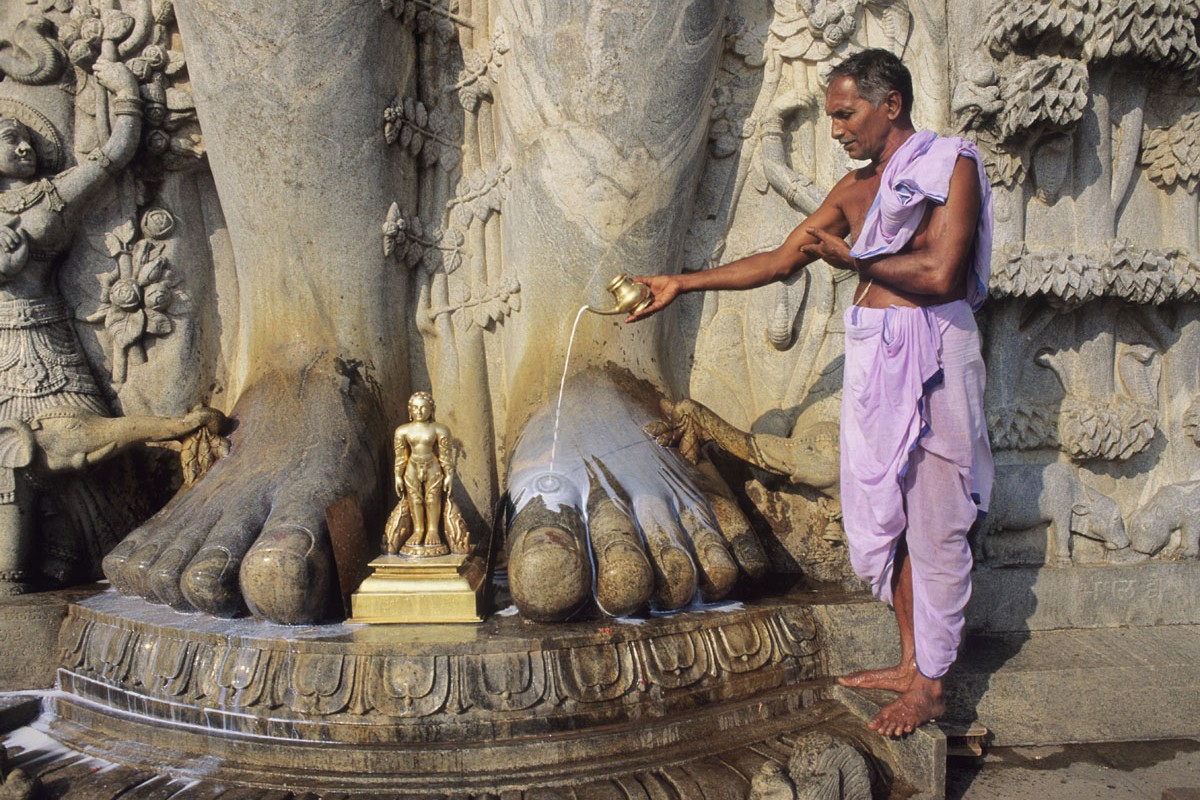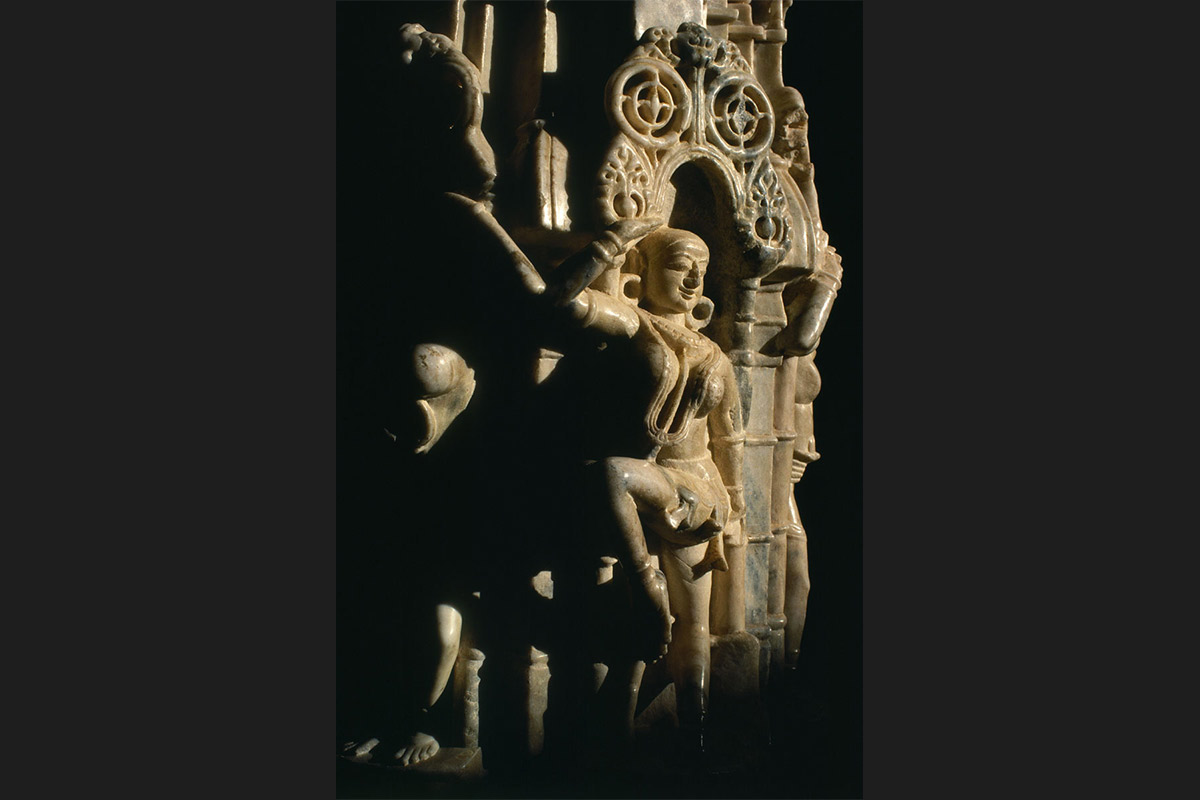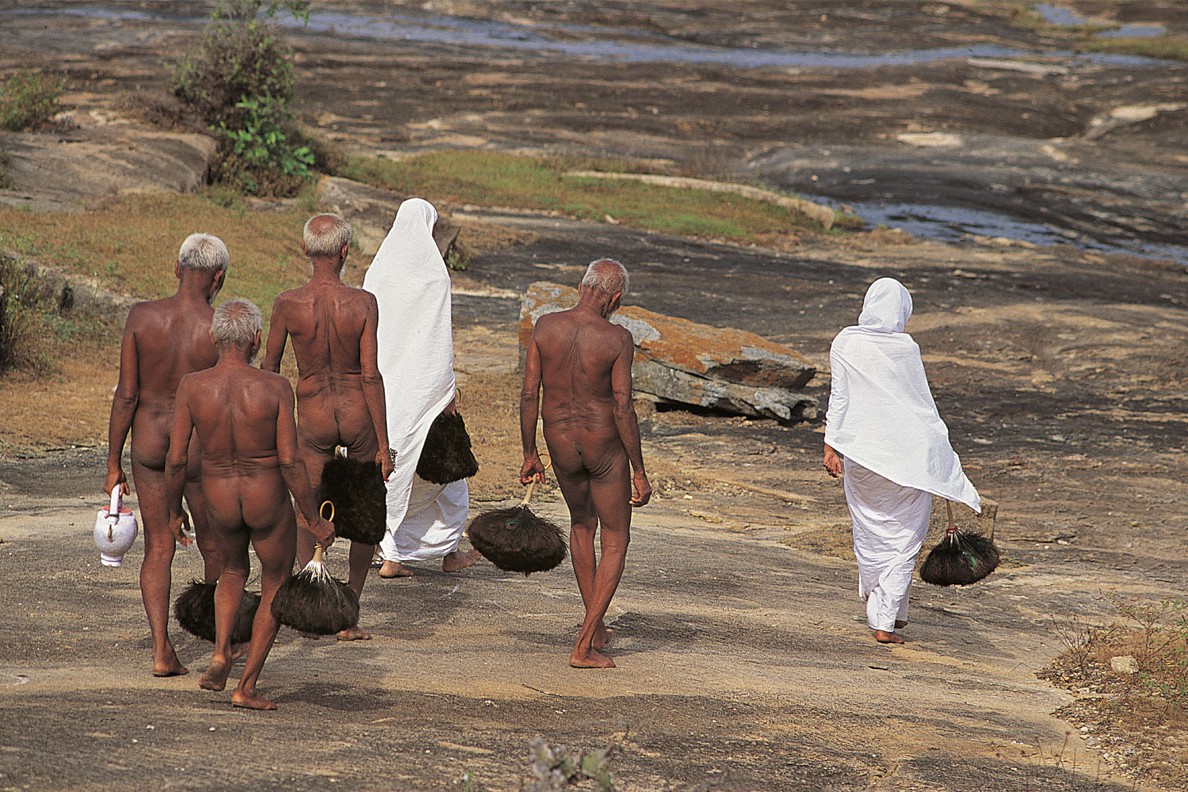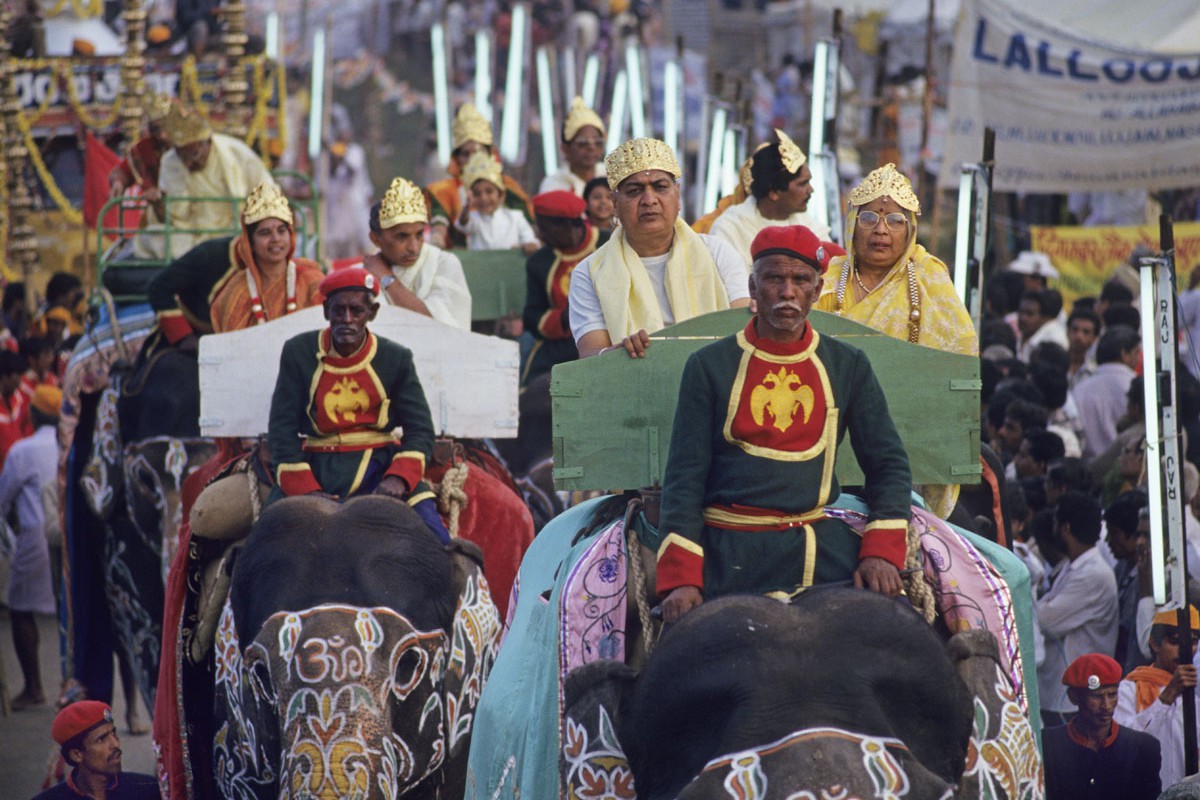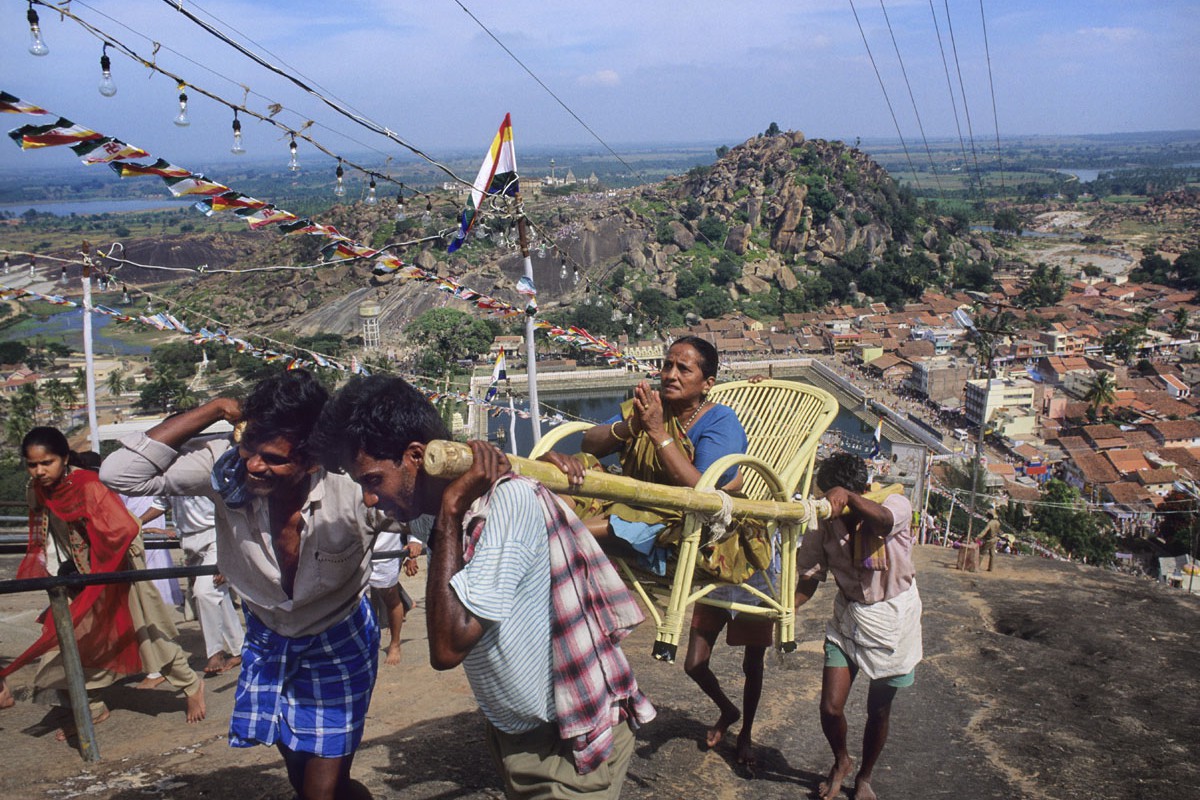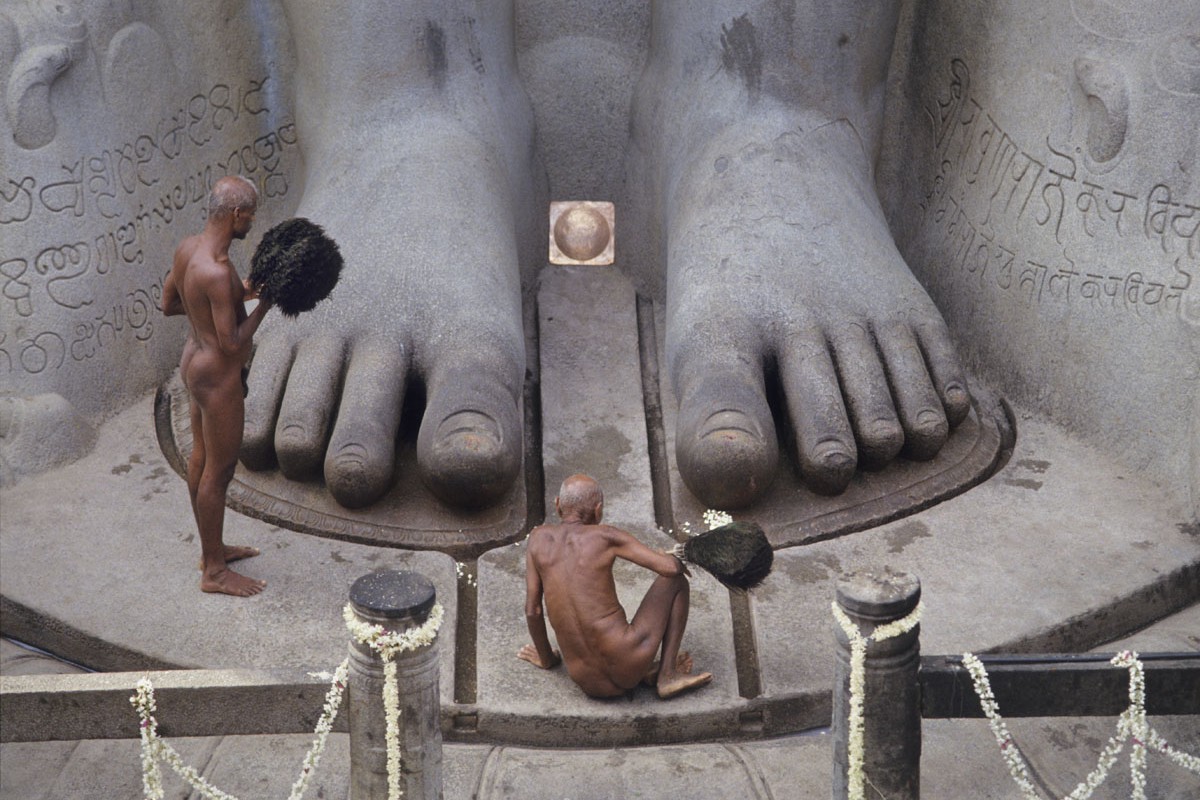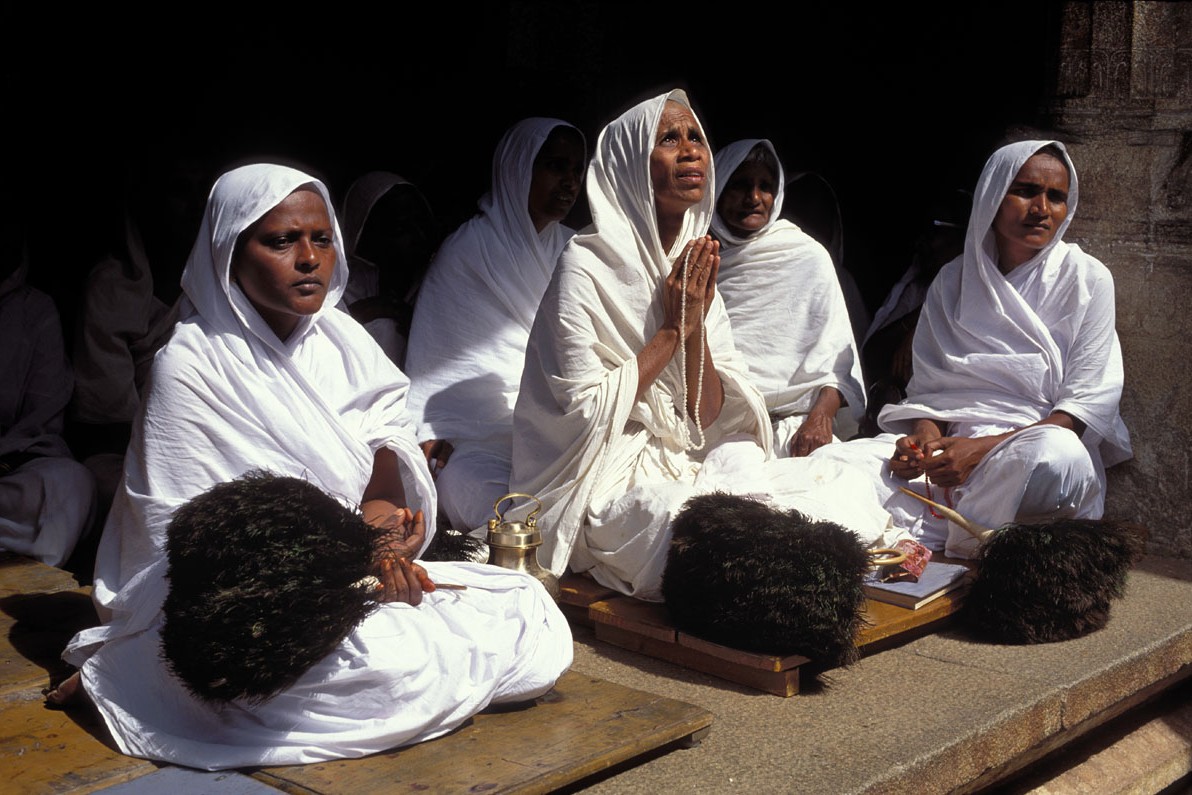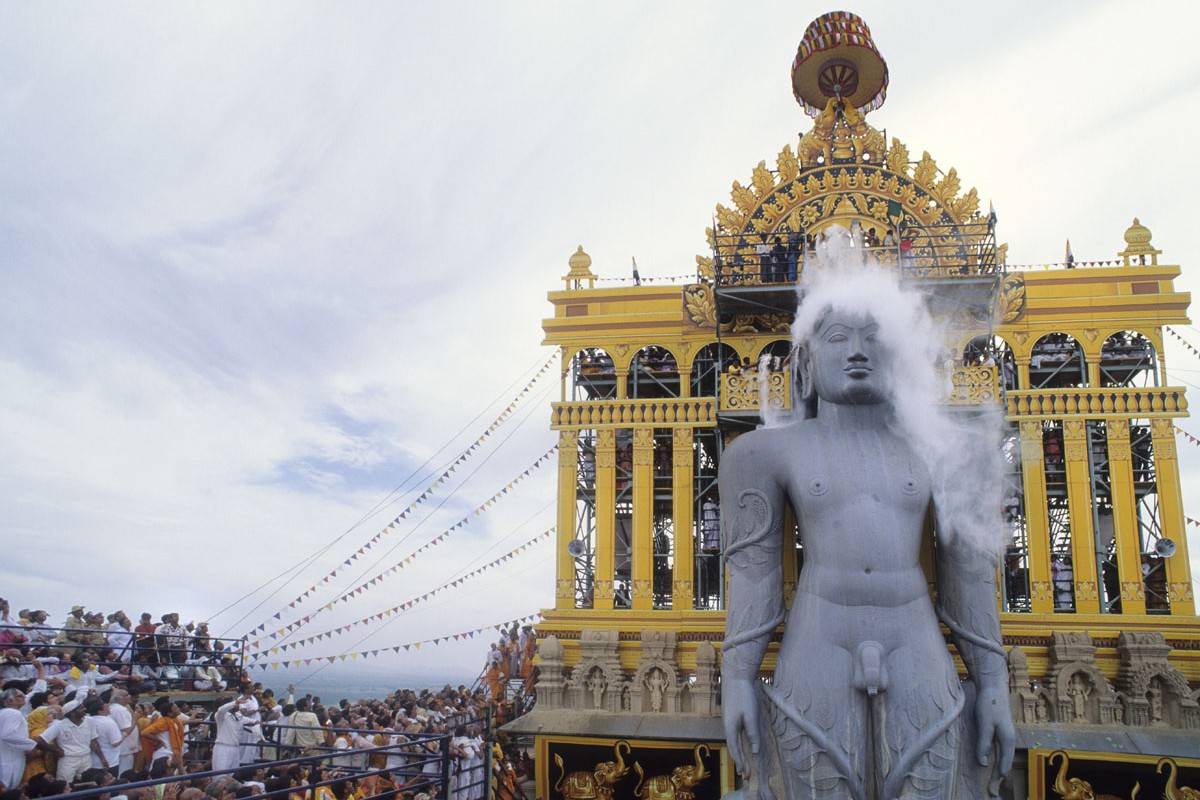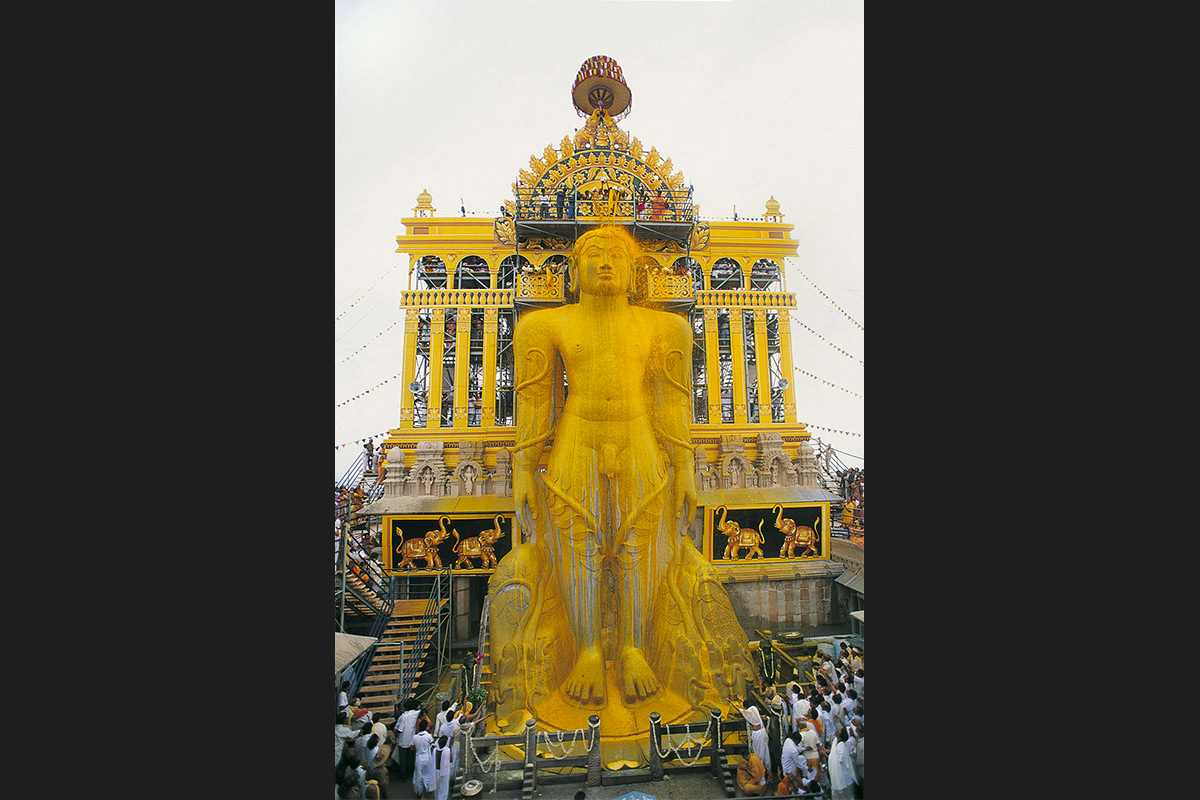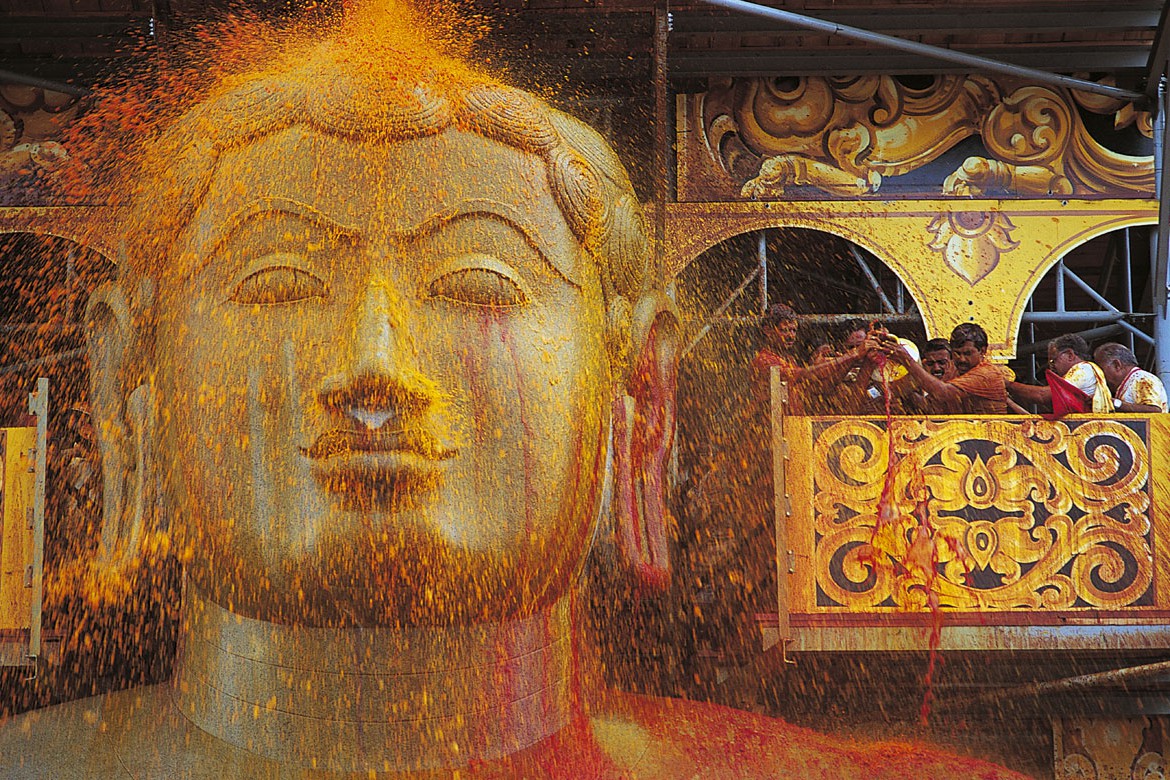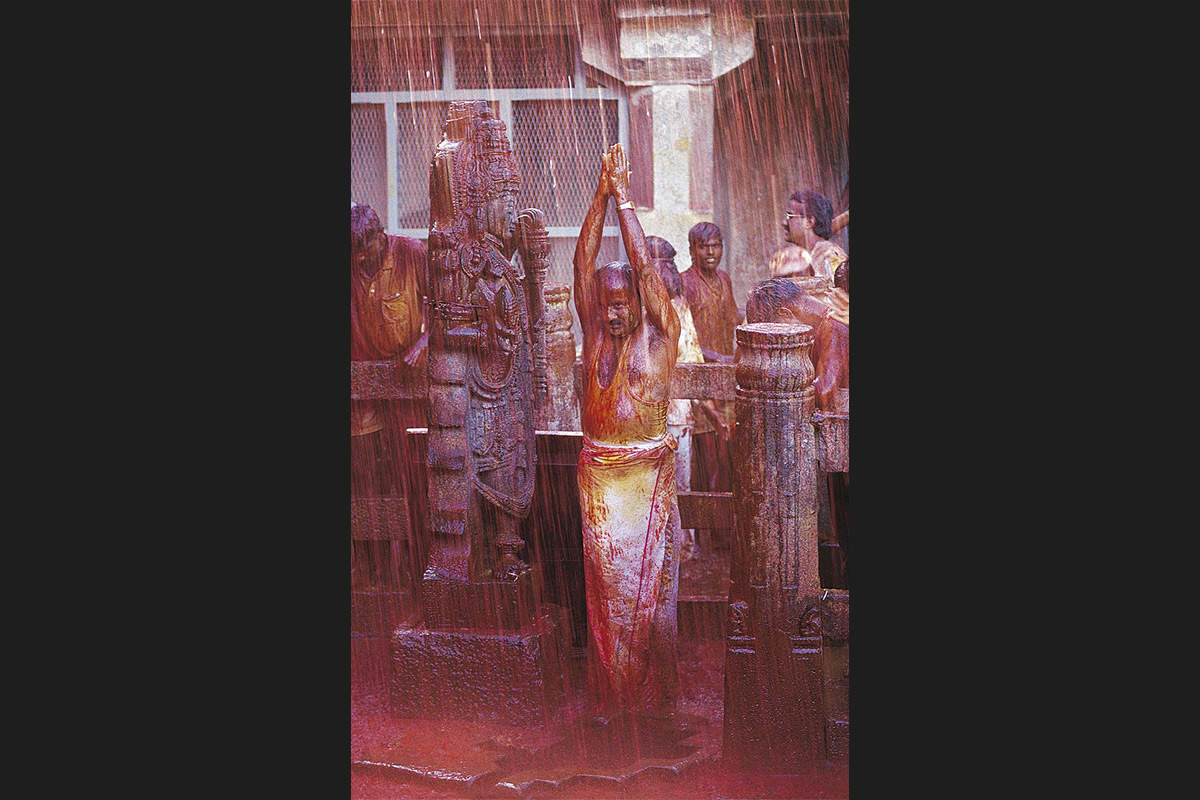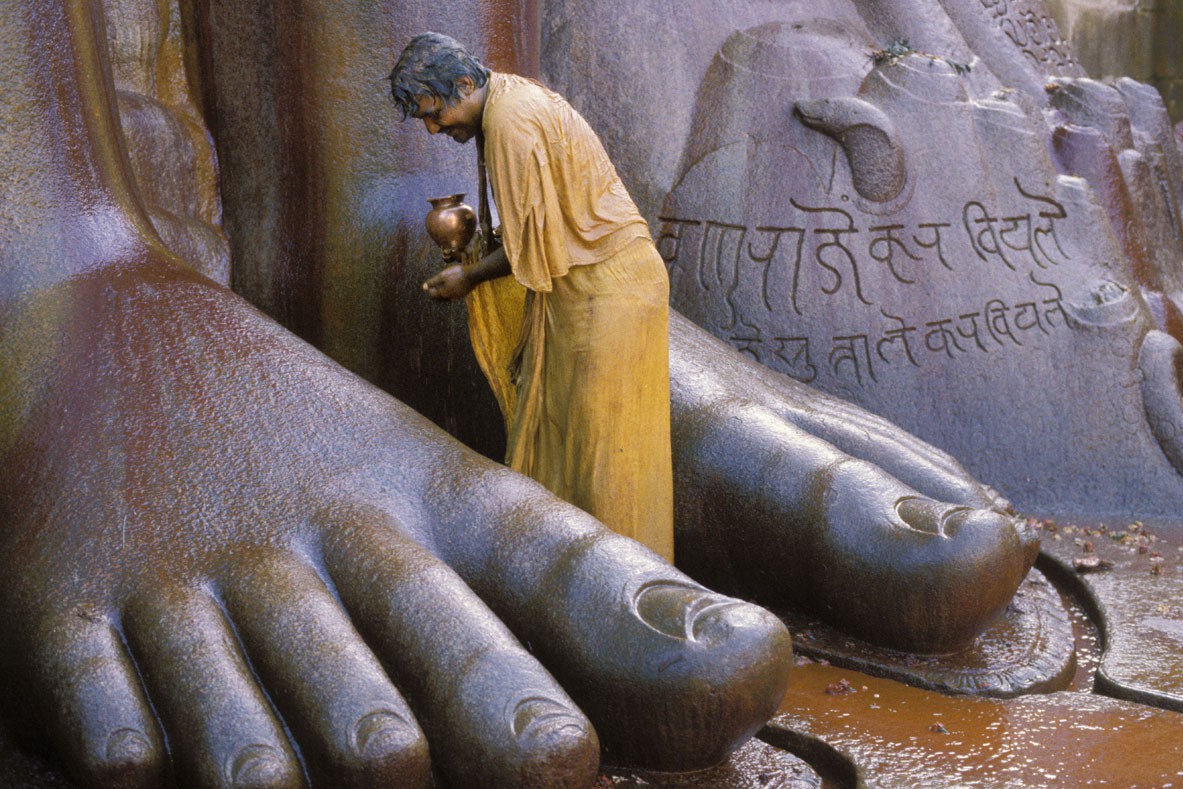Jains : The Apostles of Non Violence
Born at the same time and in the same region as Buddhism, Jainism counts just about 4 million followers who nevertheless occupy an important place in the India of today. Traditionally removed from rural activity (working the soil would imply the destruction of living creatures), they are well-represented in professions such as finance, trading in food and in precious metals. Originally a Jain is a ‘Victor’”, one who has succeeded in liberating himself from desire and illusion in order to melt into the cosmos and become God. In the first century AD a schism brought about a rupture between orthodox and liberal elements as to the means of attaining this liberation. The Digambers or “sky clad”, that is to say totally naked, believe that the accession to Nirvana would be rendered impossible by wearing even the smallest garment. The Shvetambers or those “clothed in white” do however wear gauze masks over their mouths during religious ceremonies, in order to avoid swallowing insects or life-bearing dust ! But both strictly follow a path of peace and non-violence towards all living beings. The Jains are convinced that, through ignorance man may cause the death of creatures whose existence he does not even suspect.
Every day, water, milk, sandalpaste and flowers are offered at the feet of the idols of the Tirthankaras, the “ford-makers” who have discovered and shown the way to salvation. And once every twelve years, in the small town of Shravanabelagola in Karnataka state, an immense 18 meter high statue of the prophet Bahubali is bathed and anointed with libations such as milk, sugarcane juice, saffron paste, sandalwood, and vermilion. An extraordinary explosion of colours worthy of a Hollywood blockbuster…
 Christophe Boisvieux
Christophe Boisvieux